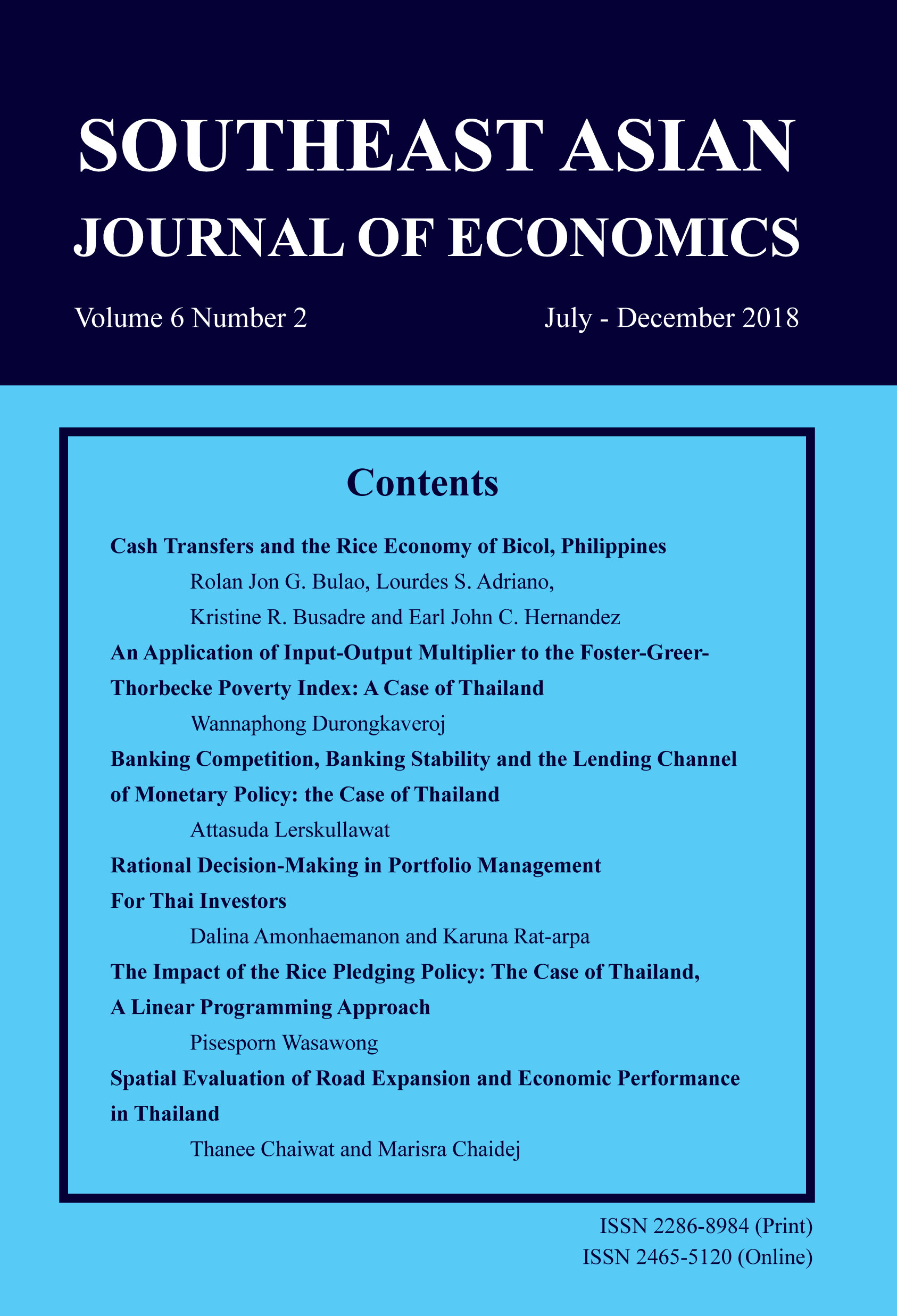Labor Supply of Married Couples in the Formal and Informal Sectors in Thailand
Keywords:
Labor Supply, Offered Wage, Labor Force Participation, Informal SectorAbstract
This paper estimates multi-sector labor supply and offered wage as well as participation choice functions for married male and female in Thailand with an emphasis on the informal sector in Thailand using Labor Force Survey for 2008. For married male, own account workers are the largest work status; for married women, unpaid family workers are the largest work status. The likelihood of participating in the informal sector as own account workers and unpaid family workers is negatively related with education, urbanity, and being white-collar workers and is positively related to age and presence of children. The wage elasticities are larger for married male than married female even in the informal sector; the wage elasticities of workers in the informal sector are larger than those in the formal sector. The own wage elasticity for male own account workers is 0.23 and that for female unpaid family worker is 0.93; elasticities for male unpaid family workers and female own account workers are insignificant. The cross wage elasticity is negative and significant only for female own account workers. The returns to education for male unpaid family workers and own account workers are 9.4-9.5 percent; those for female are about 7.1-7.3 percent. Surprising, the returns to experience for both male and female workers in the informal sector are negative.
Downloads
How to Cite
Issue
Section
License
The submission of a manuscript implies that the paper is an original work and has not been published elsewhere. The author(s) authorize the journal to reproduce or distribute the paper in printed or other electronic forms.







